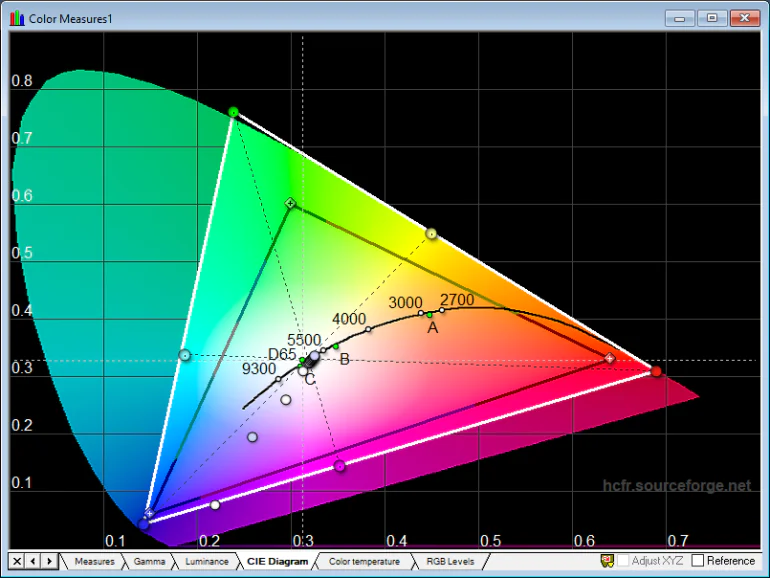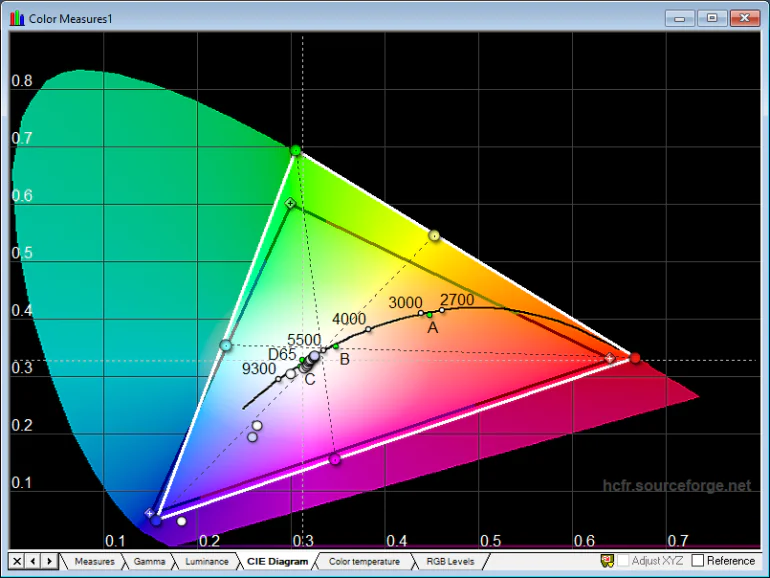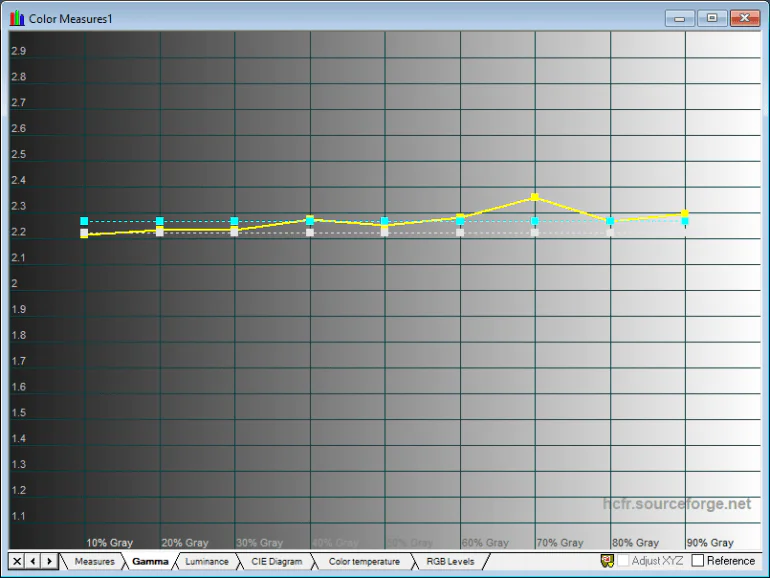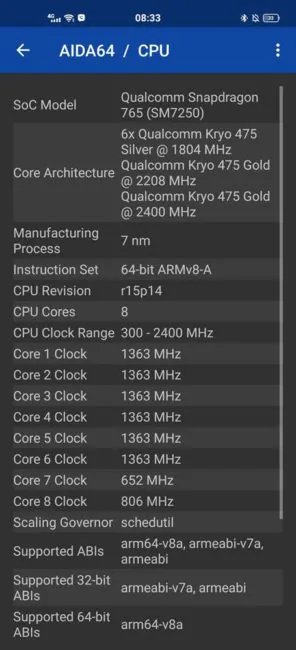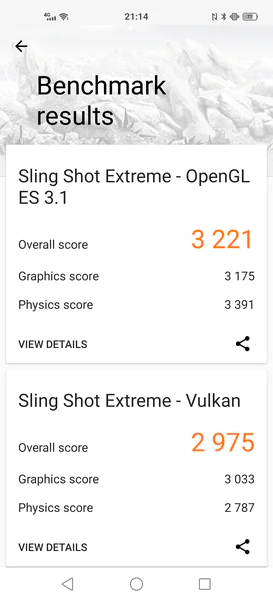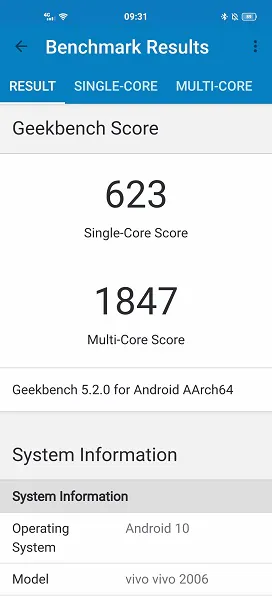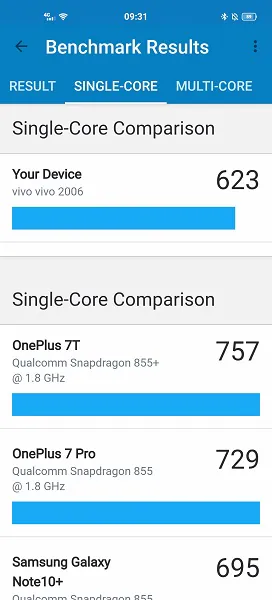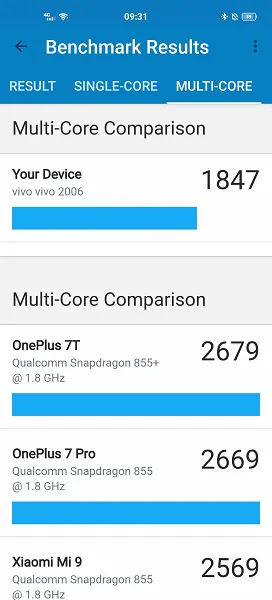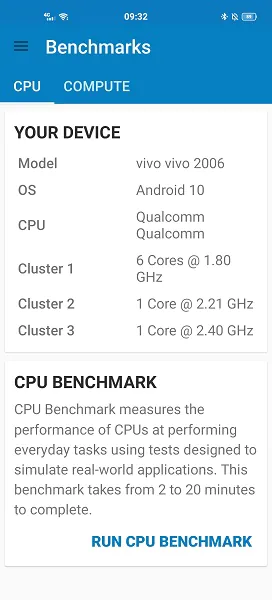© ROOT-NATION.com - Use of content is permitted with a backlink.
Most recently, the Vivo X50 Pro smartphone was pompously presented to us. Today we will try to find out whether it is as good as they say.
The devices from Vivo are among the five most popular and best-selling in the world. While Vivo is one of the largest smartphone manufacturers in the world and is responsible for many innovative industry developments, it doesn’t always get the credit it deserves. This is especially true in markets where the company decided to position itself as a seller of mid-range and budget phones. And this niche is already busy, since Xiaomi, Huawei and Honor feel very comfortable here, while OPPO and Tecno Mobile are trying to gain a foothold, as well as Samsung, which has recently been actively fighting for the middle segment, and quite successfully.
And so, Vivo came to this minefield. Does it have a chance to succeed?
Positioning and price
Perhaps the situation will change in the near future. I hope so because in my opinion the chances are minimal. In addition, some shifts may occur, as Vivo has finally decided to release its flagship X50 series phones. Although, not flagship, rather a pre-flagship or mini-flagship devices. As we’ve seen in the past, it is in this segment that brands have the most flexibility to showcase the best in terms of innovation. And for Vivo, the only device the brand has chosen to meet this challenge is their top camera phone, the X50 Pro.
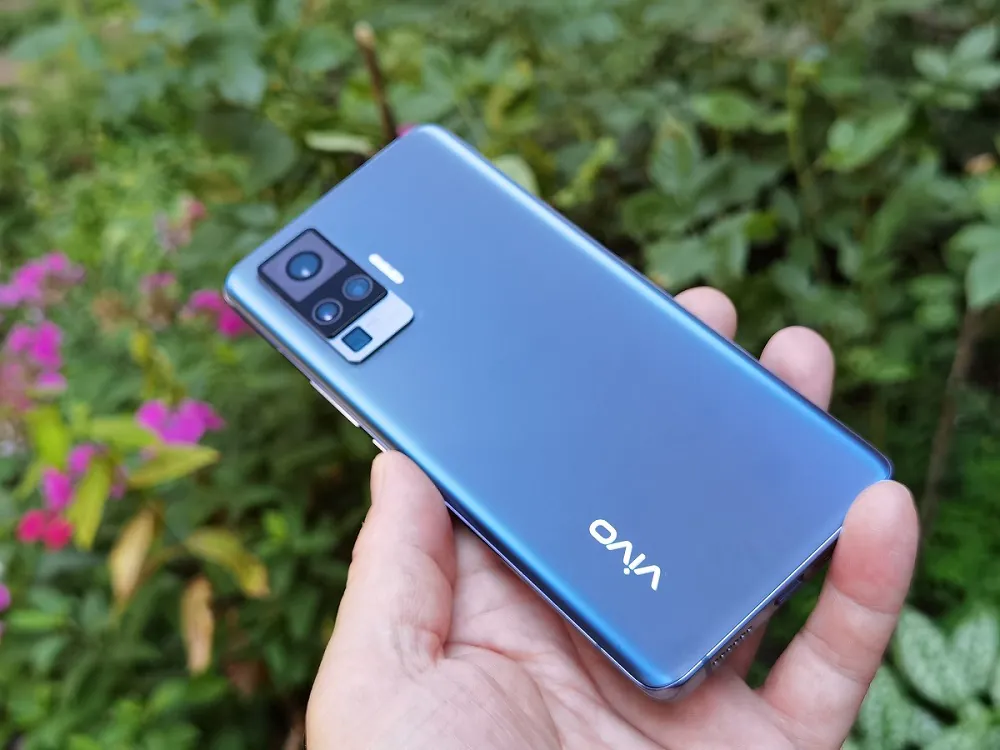
Positioned as the company’s most premium smartphone released in some markets, the Vivo X50 Pro comes in a single variant with 8 GB of RAM and 256 GB of storage. At a price of $920, this mobile device should look and feel like a flagship of the premium segment. But is it really so? The point is, there are a few things you need to know about this smartphone before you decide to spend your money on it. In this review, I will try to understand as scrupulously as possible the advantages and disadvantages of the Vivo X50 Pro. But first, let’s look at the technical characteristics of this smartphone.
Where to buy Vivo X50 Pro:
- AliExpress 1
- AliExpress 2
- ebay
Vivo X50 Pro
| NETWORK | Technology | GSM / CDMA / HSPA / LTE / 5G |
|---|
| LAUNCH | Announced | 2020, June 01 |
|---|---|---|
| Status | Available. Released 2020, June 12 |
| BODY | Dimensions | 158.5 x 72.8 x 8 mm (6.24 x 2.87 x 0.31 in) |
|---|---|---|
| Weight | 181.5 g (6.42 oz) | |
| Build | Glass front, glass back, aluminum frame | |
| SIM | Dual SIM (Nano-SIM, dual stand-by) |
| DISPLAY | Type | AMOLED capacitive touchscreen, 16M colors |
|---|---|---|
| Size | 6.56 inches, 104.6 cm2 (~90.6% screen-to-body ratio) | |
| Resolution | 1080 x 2376 pixels (~398 ppi density) | |
| HDR10+ 90Hz refresh rate |
| PLATFORM | OS | Android 10, Funtouch 10.5 |
|---|---|---|
| Chipset | Qualcomm SDM765 Snapdragon 765G (7 nm) | |
| CPU | Octa-core (1×2.4 GHz Kryo 475 Prime & 1×2.2 GHz Kryo 475 Gold & 6×1.8 GHz Kryo 475 Silver) | |
| GPU | Adreno 620 |
| MEMORY | Card slot | No |
|---|---|---|
| Internal | 128GB 8GB RAM, 256GB 8GB RAM | |
| UFS 2.1 |
| MAIN CAMERA | Quad | 48 MP, f/1.6, (wide), PDAF, gimbal OIS 8 MP, f/3.4, 135mm (periscope telephoto), 1/4.0″, PDAF, OIS, 5x optical zoom 13 MP, f/2.5, 50mm (portrait), 1/2.8″, 0.8µm, PDAF, 2x optical zoom 8 MP, f/2.2, 120˚, 16mm (ultrawide), 1/4.0″, 1.12µm |
|---|---|---|
| Features | Dual-LED dual-tone flash, HDR, panorama | |
| Video | 4K@30fps, 1080p@30fps, gyro-EIS |
| SELFIE CAMERA | Single | 32 MP, f/2.5, 26mm (wide), 1/2.8″, 0.8µm |
|---|---|---|
| Features | HDR | |
| Video | 1080p@30fps |
| SOUND | Loudspeaker | Yes |
|---|---|---|
| 3.5mm jack | No | |
| 32-bit/192kHz audio |
| COMMS | WLAN | Wi-Fi 802.11 a/b/g/n/ac, dual-band, Wi-Fi Direct, hotspot |
|---|---|---|
| Bluetooth | 5.1, A2DP, LE, aptX HD | |
| GPS | Yes, with A-GPS, GLONASS, GALILEO, BDS | |
| NFC | Yes | |
| Radio | No | |
| USB | Type-C 1.0 reversible connector, USB On-The-Go |
| FEATURES | Sensors | Fingerprint (under display, optical), accelerometer, gyro, proximity, compass, color spectrum |
|---|
| BATTERY | Li-Po 4315 mAh, non-removable | |
|---|---|---|
| Charging | Fast charging 33W, 57% in 30 min (advertised) |
| MISC | Colors | Dark Blue, Light Blue |
|---|---|---|
| Models | V2005A, 2006 | |
| SAR EU | 0.34 W/kg (head) 0.88 W/kg (body) |
Subtleties of design
I can’t say anything about packaging, since I have a test device. I have only the smartphone itself without the box and accessories.
Literally from the first second of our acquaintance, the appearance of the Vivo X50 Pro seemed very familiar to me. Its similarity to the Samsung Galaxy S20 can be seen in almost everything. It also uses glass on the front and back. The same large display with slightly rounded edges, the same location in the upper left corner of the hole for the front-facing camera.
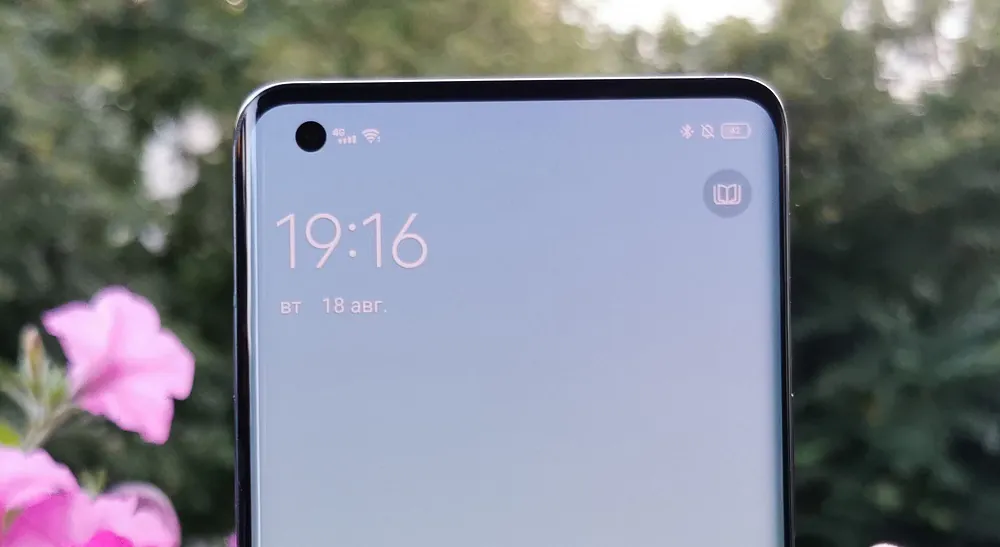
Yes, curved display phones have grown in popularity in the last year or so, but what Vivo has tried to copy into the X50 Pro doesn’t look good.

Although it is worth noting that there are some good ideas here and there. I understand that design is s a matter of taste. Some might think that Vivo has got a premium phone not only in appearance, but also in feel. Covered with matte glass on the back, the X50 Pro looks unusual and doesn’t collect fingerprints.
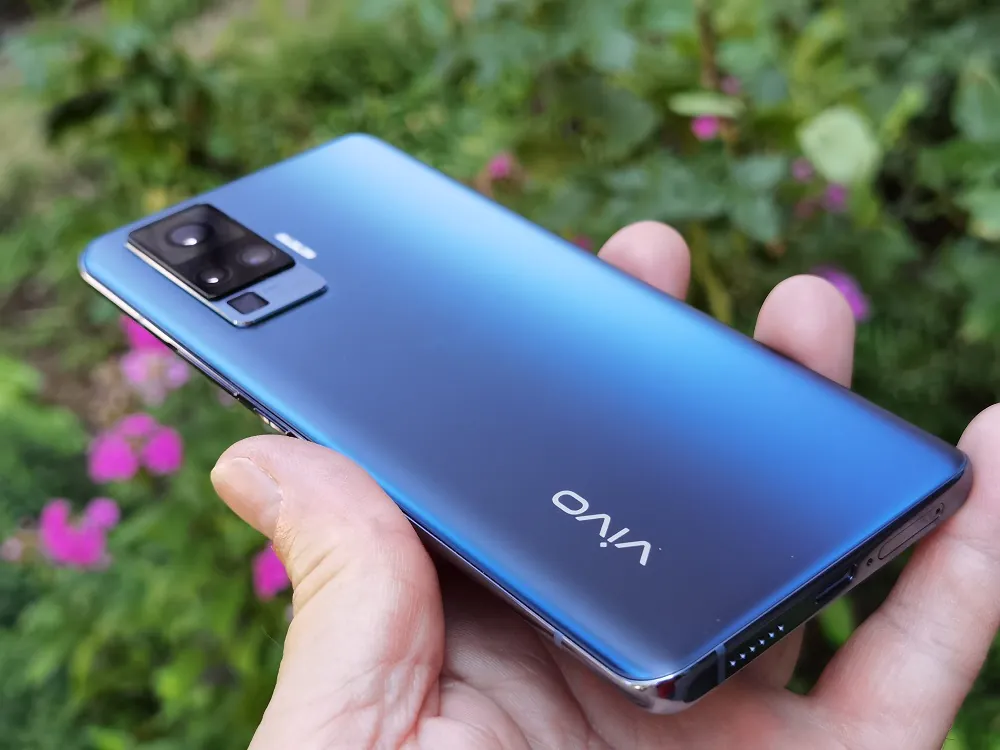
However, using matte glass doesn’t really guarantee that the phone isn’t slippery. The surface looks really cool, for a Chinese smartphone. The matte surface itself shimmers quite interestingly with unusual shades from steel gray to bluish. We have to admit that this design looks very attractive.
You will also be pleased with the fact that the Vivo X50 Pro is one of the thinnest and lightest flagships you can get right now. With dimensions of 158.5 x 72.8 x 8mm, it fits really well in the hand. Plus, it weighs only 180 grams and really feels very light compared to the competition. It’s also quite durable, thanks to the metal frame around the perimeter.
The smartphone is thin almost everywhere, the top and bottom edges are flattened, which allows it to stand firmly in an upright position. At the top you will see only a noise canceling microphone and a barely noticeable “5G” inscription, which indicates support for new generation of mobile networks. The earpiece speaker is located between the top edge of the frame and the screen, but it is almost impossible to notice.

The arrangement of physical buttons is usual. The left side face is completely empty, except that the antenna strips are one at the top and bottom.

On the right, the company’s engineers have placed a solid volume rocker and just below the power button. The elements are slightly recessed but are easy to find.

On the bottom edge, from left to right, you will find a slot for two SIM cards, which are located one above the other, a microphone, a USB Type-C port, and a multimedia speaker grill. It seems that now the standard 3.5mm audio jack will be a rare guest in our smartphones. This phone doesn’t have one.

But in an attempt to create, in their opinion, an exquisite smartphone design, the company made some hasty decisions. There is no soundness, no attention to detail, no general perception. It seems that the company’s engineers worked in disunity, trying to copy competitors in different aspects, but sometimes unsuccessfully.
This is especially felt when you look at the back of the smartphone. You will definitely notice the protruding main camera module.

I will tell you about the features of the camera later, but now I want to talk about this nonsense of a module. First, there’s wide grey strip with a periscope module which visually crooked, but this is just an optical illusion. Then we see the three main lenses of the device. There are main, portrait and ultra-wide-angle cameras here. On the right, sensors are placed vertically. Perhaps this is my subjective opinion, but this module looks very cheap.
Summing up a little, I can say that the design of the vivo X50 Pro caused me conflicting feelings. A thin, graceful, lightweight phone with a matte finish looks gorgeous, but this awkward two-stage camera module spoils the whole experience.
90 Hz screen, fingerprint scanner
On the front, we have a 6.56-inch curved Ultra O 3D display manufactured by Samsung with a resolution of 1080 x 2376 pixels. It is slightly curved around the edges and has a hole for a 32MP front camera at the top left. The curved screen visually minimizes side bezels, and the top and bottom margins are also small. All this gives the phone an excellent 92 percent screen-to-body ratio.

The panel is an OLED display and supports a maximum refresh rate of 90Hz and a touch response rate of 180Hz. If we have already gotten used to the refresh rate of 90 Hz, since it is becoming almost the standard for modern flagships, then I am sure that most readers have a question about touch response frequency.

Recently, it has become fashionable for manufacturers to promote increased responsiveness for new smartphones. In short, this is the screen’s responsiveness to pressing. Of course, the higher it is, the better. But this “trick” will only help gamers, and for the rest of the users, by and large, this function is unnecessary. But still, for example, at 60 Hz we get a response of 16.6 ms, at 120 Hz – 8.3 ms, and at 240 Hz we get fantastic 4.16 ms. Ordinary users will notice an improvement in response only when using the fingerprint scanner. Perhaps that’s why the fingerprint scanner in the vivo X50 Pro works flawlessly. I had no issues in 3 weeks, although I most often use face unlock. Sometimes there were malfunctions, but either in poor lighting or in complete darkness. This is where the fingerprint scanner helped me out.
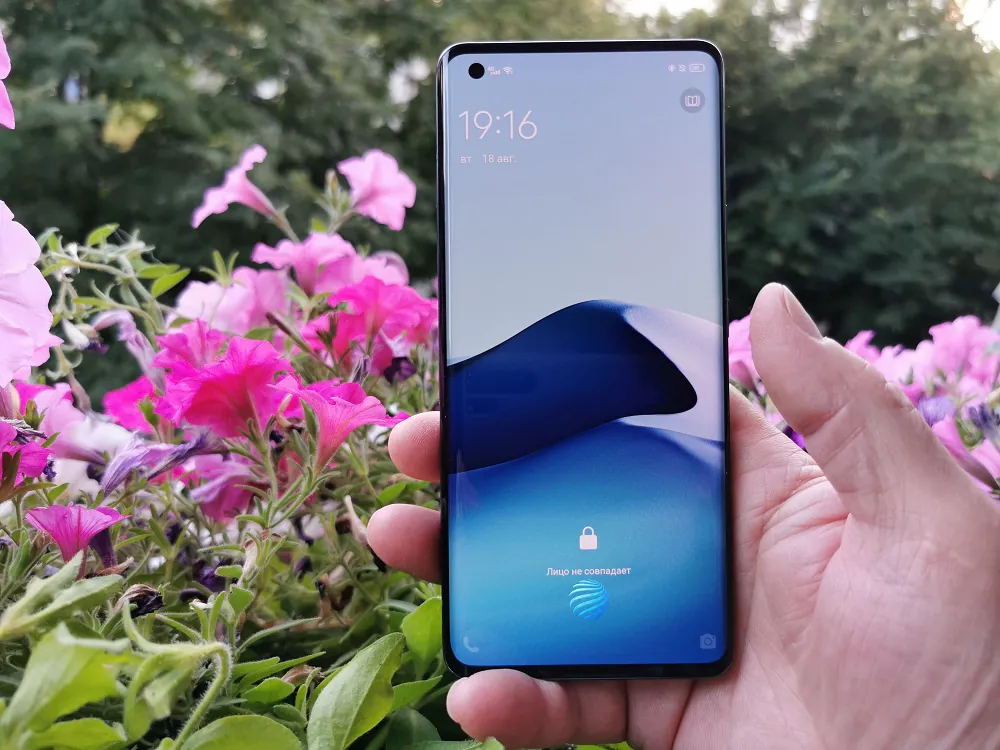
In terms of picture quality, the Vivo X50 Pro’s screen delivers vivid colors and deep blacks. Due to the high refresh rate, animations and games appear very smooth. The panel supports HDR+ technology, and the screen brightness is high and always comfortable, which is undoubtedly a plus if you like to consume a lot of content outdoors, even in direct sunlight.
Three video modes are available in the settings: bright, normal and standard, which allows you to customize the display to your taste.

In bright mode, you can take advantage of the maximum color gamut, but you have to put up with a slightly bluish tint of white. The standard mode has a smaller color gamut, but more natural colors, and the normal mode practically limits the colors to the sRGB space, so it will be interesting for those who do not like AMOLED, since in terms of saturation it is very close to IPS.
In the commercial versions of the Vivo X50 Pro both the display and the backplate are covered with Schott Xensation scratch-resistant glass. It was not in my sample and I noticed two rather noticeable scratches closer to the location of the fingerprint scanner. Immediately there were thoughts that over time the screen will be covered with scratches here and there. However, I was surprised not to find any additional deep scratches after 3 weeks. Microscratches are there, but let me remind you that this is a sample without a protective glass.
Vivo X50 Pro performance: oddities of choice
Another oddity I encountered with the Vivo X50 Pro concerns processor choices. And indeed, in terms of characteristics, this smartphone falls short of an top flagship device. This is because it is based on an upper mid-range Qualcomm Snapdragon 765G. It is an eight-core processor, based on a 7nm process, equipped with two high-performance Cortex-A76 cores with clock speeds of 2.4 and 2.2 GHz and 6 Cortex-A55 cores with a maximum frequency of 1.8 GHz.
This means that the chipset supports LPDDR4X memory (versus LPDDR5 in the flagship SoC 800 series) with a frequency of 2133 MHz. The device has 8 GB of RAM, as well as 256 GB of storage. The latter cannot be expanded since there is no support for memory cards. Although, in my experience, 256 GB is quite enough for storing photos and videos, as well as other content.

The Snapdragon 765G chip is supplemented with the Adreno 620 graphics core. With support for all available modules and connection interfaces, the Vivo X50 Pro is fine. In particular, there is a Bluetooth 5.1 module, dual-band Wi-Fi 802.11 a/b/g/n/ac (sorry, there is no Wi-Fi 6), support for A-GPS, GPS technologies, as well as s GPS, GLONASS, Beidou, and Galileo. But most importantly, the smartphone supports 5G communication standard.
It is the Snapdragon 765G that provides 5G support. And in general, in any use case – from basic tasks to heavy games – the X50 Pro does a good job. It also does well with multitasking. During my testing, I used the X50 Pro for a variety of tasks, including web browsing, social networks, and even heavy games like Call Of Duty Mobile. The latter ran flawlessly on the highest graphics settings possible. It is worth mentioning here the presence of a special “Ultra Game Mode”, but I will talk about it in more detail later.
However, the fact that the Vivo X50 Pro is not equipped with the flagship Qualcomm Snapdragon 800 series chipset makes it difficult to recommend it to those who want a smartphone that is not only good now, but is also future-proof. And given the price, this problem becomes even more noticeable since competitors offer smartphones based on the top-end chipset.
If we talk about synthetic tests, then Qualcomm Snapdragon 765G is significantly inferior to competitors, which is not surprising. Something else worries me. It does not throttle, but it heats up noticeably, and sometimes there were even other interesting issues. I ran the resource-demanding games like Shadow Fight 3 and Real Racing 3. There were no slowdowns during the game, and 90 Hz provides a smooth picture, but sometimes I noticed pixelated graphics in races. Perhaps it’s the games themselves, but the fact remains.
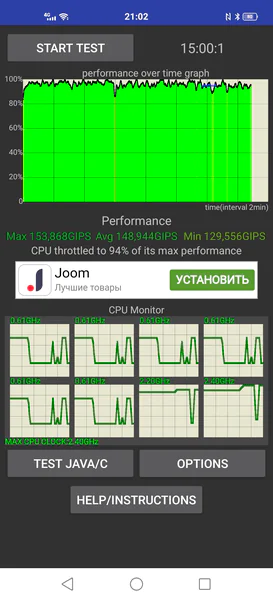
Funtouch OS 10.5 based on Android 10
Another important factor influencing the performance of a smartphone is the proprietary Funtouch 10.5 shell based on Android 10. This is the first time I tried proprietary Funtouch shell.

Note that the UI is a bit bloated and offers customizable icons and animations that may not be to everyone’s taste. For myself, I noted that the Funtouch 10.5 shell has absorbed a few functions from the shells of all competitors. There are also elements from iOS, especially the design of icons in the notification curtain, and from “clean” Android, and from Samsung skins. A kind of deliciously cooked minced meat.
You know, this is not surprising, since now almost all shells on Android are often very similar to each other, but they all began to gravitate more towards the “clean” version of the OS.

Funtouch 10.5 has almost everything that is available on Android 10. There’s a dark theme, gesture navigation, the ability to reduce screen flickering at low brightness, display “light effects” on the side edges in various situations, the ability to place two apps on screen at the same time and work with them, its own cloud service VivoCloud, service for instant file sharing EasyShare, etc.
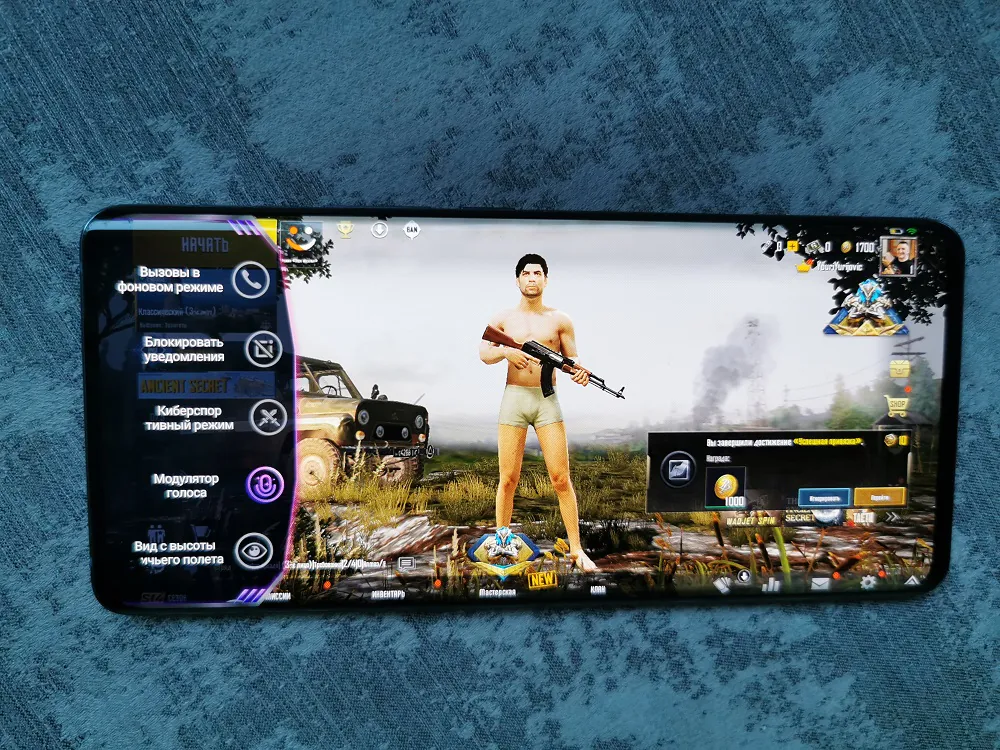
But I promised above to tell you a little about the “Ultra Game Mode” available on Vivo smartphones. Undoubtedly, it is now fashionable to show off the gaming capabilities of mobile devices. Vivo has also tried to keep up with the new trends and added “Ultra Game Mode” with a set of settings that will help you play comfortably on your smartphone.
By enabling this mode, you have the opportunity to block incoming notifications, except for important ones, so that they do not interfere with the gameplay. You also get access to quick settings of the smartphone, and you can lock the screen brightness. It is possible to activate the information panel, set what frame rate will be in priority, adjust 4D vibration in the game, and also use the “Bot Mode”, which will enable the autoplay when the screen is off. The most interesting thing is that all the settings are available both before the game and during the gameplay.
Battery life: nothing special
Recently, it has become somehow boring to write about the autonomy of modern smartphones, especially the supposedly flagship ones. This also applies to new devices from Vivo.
In short, everything is in order. The smartphone can easily work all day on a single charge. The 4,315mAh rechargeable battery that supports 33W fast charging does its job perfectly. True, I did not have a bundled charger, so I used an adapter from Huawei P40 Pro. But if you believe the manufacturer’s promises, Vivo X50 Pro can be charged from 0% to 50% in half an hour, and the entire charge will take just over an hour. Let’s take their word for it, I think such figures are quite real.
Gimbal camera in Vivo X50 Pro
During the presentation, special attention was paid to smartphone cameras. I remember hearing so much about the so-called Gimbal Camera System Pro Level Stabilization. So what is it exactly?
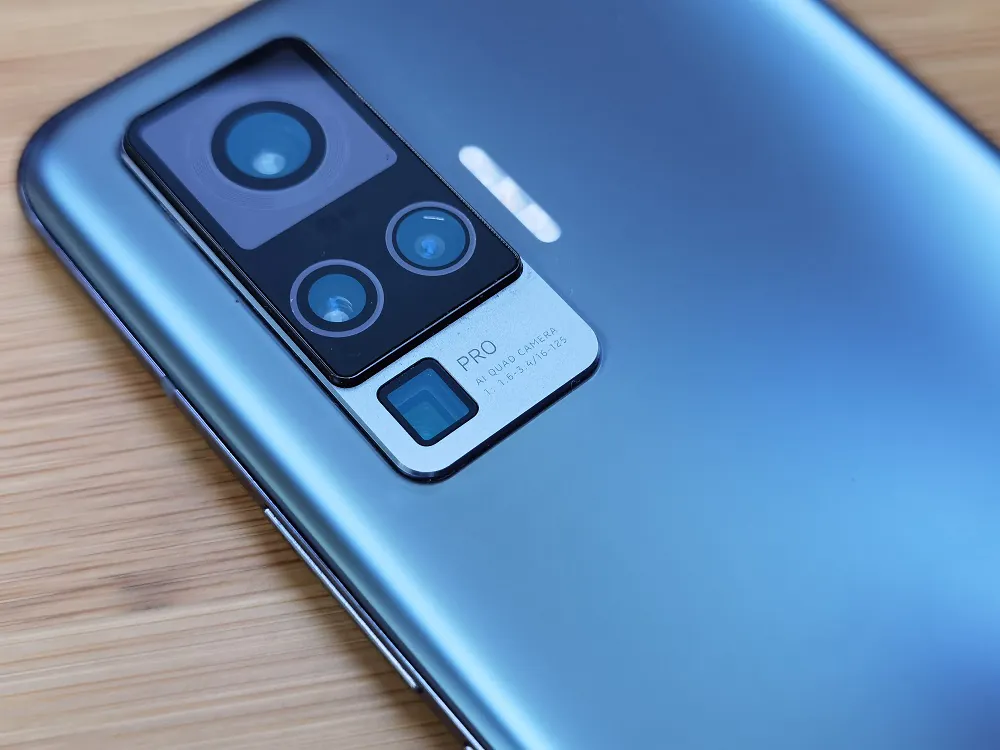
But first, dry numbers. Vivo X50 Pro has four cameras; 48-megapixel main module (Sony IMX598 sensor) with an f/1.6 aperture mounted on a gimbal, a 13 megapixel portrait camera with an f/2.46 aperture, an 8 megapixel ultra-wide-angle sensor with an aperture f/2.2 and a telephoto lens, the so-called “periscope”, 8 megapixels with an aperture of f/3.4. In front, there is a 32MP selfie camera with f/2.45 aperture.
It’s worth noting that the camera’s interface is pretty simple and intuitive. There are enough modes here, such as the standard “Photo” mode, which is most often used by everyone, portrait mode, video mode, as well as a separate dedicated “Night” mode. The button for switching between the main and front cameras is of course also in place.
There is also a “More” option, which is the most interesting of all the functions in my opinion. Switching the main sensor to 48 megapixel mode, panorama, live photo, Pro-mode and all sorts of slow-motion and interval shooting are not particularly interesting for me lately. But the modes like “Supermoon”, “Snapshot in motion” and “Starry sky mode” are definitely curious.
But you remember that at the beginning I was talking about incredible Gimbal Camera System Pro Level Stabilization, which supposedly allows you to take high-quality pics in motion, avoiding the camera shake?

Before we dive into the technical aspects, let’s outline the advantages of a gimbal over traditional stabilization technologies such as OIS and EIS. Optical image stabilization is closest to gimbal and relies on sensors such as gyroscopes to calculate how the lens should move around its axis to compensate for shake. However, OIS only accounts for small movements. EIS is even easier to implement as it is purely software stabilization without the use of physical hardware.

The gimbal on the Vivo X50 Pro relies on hinges, mounts, gyroscopes and other sensors to smoothly rotate the 48MP Sony IMX598 sensor, thereby compensating for shakes and jerks. As a result, when you tilt, pan, or rotate the camera, the gyroscope calculates the direction and displacement caused by the shock and forces the gimbal module to move in the opposite direction to compensate for the shock. All this happens in real time while you are filming. Vivo claims that the module is configured with a 100Hz refresh rate for frame stabilization.
With OIS, stabilization targets small deflection angles while the gimbal module moves in all directions to resist shock with a ± 3° shockproof angle, which Vivo claims is three times that of traditional OIS. While OIS is aimed at the center of the frame, the gimbal’s large anti-shake zone helps stabilize the entire frame without cropping or distorting it.
Have I tired you with theory yet? Then let’s move on to practice. But first of all, for the stabilizer to work, the user must first enable it in the smartphone’s camera settings. I can confirm that the gimbal is calibrated and then assists the user in shooting by providing him with better lens stabilization than just the current generation OIS and EIS systems found in other smartphones.
In the Vivo X50 Pro’s camera app, the company used a visual animation of the gimbal that clearly shows the movement of the phone and how stable the frame is, which ultimately helps the end result of the pictures they take. Essentially, there is an animated ball in the center that moves to reflect the actual position of the gimbal. Although if truth be told, I did not feel any wow effect when using the gimbal.

Yes, stabilization has improved, yes, the risk of taking a bad photo from the fact that your hands tremble or someone accidentally pushed you has decreased. But there’s no leap in the quality. Throughout the testing period, I tried to shoot in motion, while walking or playing sports. All the same, the photos were slightly blurred to one degree or another. Although we have to admit that the Gimbal Camera System provides slightly better results compared to the EIS and OIS solutions that can be found in competing phones. This is because the main camera of the X50 Pro provides flexible 3D stabilization with a maximum shake protection angle of about 300% of traditional OIS. But this is clearly not some revolutionary solution that must appear in all smartphones from now on.
If we talk about photography in general, in the daytime we get stunning results, although this is hardly surprising. I am sure you will like the detail in the photo, although sometimes in difficult situations the automatic mode can be a little wrong, trying to draw out some details in the shadows. In this case, the pictures are a little overexposed, but this does not mean that everything is bad. Especially on a bright summer day, the Vivo X50 Pro’s camera does its job well.
SEE EXAMPLES OF PHOTOS AND VIDEOS IN FULL RESOLUTION
The wide-angle module upset me a little. It provides a 120º viewing angle. It is not the best in the industry and the photo quality is pretty average for this category of smartphones. Most of the shots come out noisy, details and color reproduction above par.
It’s the same with the periscope lens, which, despite being 8 megapixel, can capture detailed shots with 5x optical zoom and even make pretty decent shots with 60x digital superzoom. But if everything is in order with 5x optical zoom and these pictures are quite detailed, then when switching to digital zoom it all goes downhill. I would say that even 30x zoom is usable sometimes. But why do we need a 60x digital superzoom, if the photos are, to put it mildly, not very good, is a big mystery.
The Vivo X50 Pro also has a dedicated special mode called Extreme Night Vision for shooting in low light. Which, according to the statements of the company, should compensate for the almost complete absence of light, reasonably increasing its brightness and making pictures of high quality. Admittedly, the main lens of the X50 Pro usually captures shots with lots of detail and extremely vivid colors, but the quality of night shooting still leaves much to be desired, especially when compared to the Huawei P40 Pro or Samsung Galaxy S20 Ultra.
SEE EXAMPLES OF PHOTOS AND VIDEOS IN FULL RESOLUTION
As for the interesting modes that I mentioned above, they did not really impress me. Maybe I should have moved away from the city limits and photograph the starry sky and the moon, but this would hardly have significantly improved the quality of the images.
A little about video shooting. The smartphone can capture 4K video at 60fps, although super-stabilization with an EIS connection will still only work in 1080p 60fps. And the module switch will only work at 1080p 30 fps. The captured video has great quality, color accuracy and, of course, image stabilization.



SEE EXAMPLES OF PHOTOS AND VIDEOS IN FULL RESOLUTION
Should you buy a Vivo X50 Pro for this price?
I always try to avoid discussing prices for new smartphones, as I consider it a personal choice. But in the case of the Vivo X50 Pro, this issue cannot be ignored. After all, it’s price puts it on a par with the flagships of 2020, but not the technical and functional capabilities.
Would I buy myself this smartphone? I found the answer to this question on the third day of use. And, as you guessed it already, it is negative. The new product from Vivo is quite thin, light, with an interesting rear panel, and has a great design if it were not for this awkward two-stage camera module. It spoils the whole look.
And if we delve deeper into the technical characteristics of the Vivo X50 Pro? The company positions the smartphone as a flagship, but equips it with a mid-range processor, while setting a high price tag. I won’t say that the chipset is bad, but it is not intended for a top-end device in this price range.
Now for the cameras. The presence of a periscope and gimbal is certainly a huge plus for the X50 Pro. But this set of cameras is not outstanding, and the quality of the footage makes it impossible to say that this is one of the best cameras on the market.
You could also think of a high-quality 90 Hz AMOLED display, but now it seems that this is becoming the norm for most mobile device manufacturers on the market.
Who is this smartphone for? First of all, the fans of the company will like this device, although I honestly don’t know if they exist. Also, such a smartphone may appeal to mobile photography buffs and aspiring filmmakers who want to actually try out the Gimbal-camera. But would they be willing to pay the price? It is the price that can become the main factor when choosing, because competitors – Xiaomi, Realme, OPPO and others – are not asleep, presenting very interesting devices in our market, but with a much more pleasant price tag.
Pros
- nice design;
- excellent materials;
- high-quality display with 90 Hz;
- Gimbal camera;
- relatively high quality photos;
- redesigned and reimagined Funtouch 10.5 shell;
- decent battery life of the device.
Cons
- awkward design of the camera module;
- not the most productive platform;
- price too high.
Where to buy Vivo X50 Pro
- AliExpress 1
- AliExpress 2
- ebay
Subscribe to our accounts:


